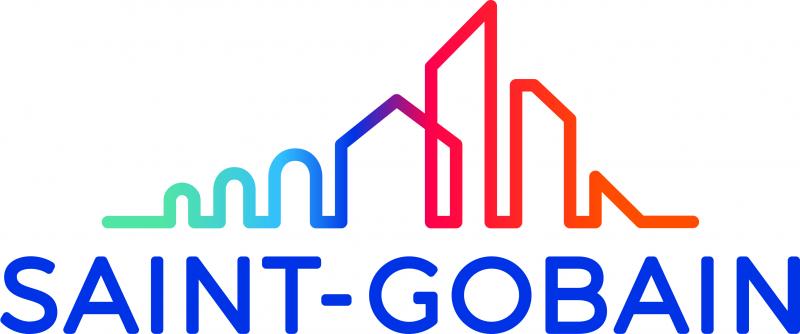Colmatage des constrictions par des capsules : effet des interactions entre particules et entre particules et parois // Squeezing multiple capsules into a constriction: Effect of particle-particle and particle-wall interactions
|
ABG-131657
ADUM-65723 |
Thesis topic | |
| 2025-05-03 |
Université de Technologie de Compiègne
Compiègne cedex - Les Hauts de France - France
Colmatage des constrictions par des capsules : effet des interactions entre particules et entre particules et parois // Squeezing multiple capsules into a constriction: Effect of particle-particle and particle-wall interactions
- Electronics
Capsules, Constriction, Colmatage, Simulations numériques
Capsules, Constriction, Clogging, Computer simulations
Capsules, Constriction, Clogging, Computer simulations
Topic description
Les dispositifs microfluidiques manipulant des particules ou cellules sont limités par des bouchons formés à l'entrée des canaux, surtout lorsque la taille des particules est comparable à la largeur des microcanaux ou en cas d'arrivée simultanée. Ce projet de thèse étudiera pour la première fois le passage de particules déformables (capsules) - adhésives - dans une constriction. Les particules rigides, connues pour former des arches stables bloquant les canaux, montrent que le ratio taille du col/particule est crucial pour le colmatage. Des simulations numériques seront réalisées en 3D pour analyser le mouvement collectif de capsules adhésives en variant (i) leur déformabilité, (ii) la largeur de la constriction, et (iii) l'intensité des interactions entre particules et parois. Ces études vont permettre de comprendre et contrôler le mouvement des particules passives (e.g. des globules rouges) et actives (e.g. des bactéries) dans des systèmes biomédicaux et dans des milieux poreux. Cela permettra d'améliorer par la suite le design ou les conditions d'utilisation de ces dispositifs microfluidiques pour les rendre plus performants.
------------------------------------------------------------------------------------------------------------------------------------------------------------------------
------------------------------------------------------------------------------------------------------------------------------------------------------------------------
Microfluidic devices that handle particles or cells are limited by clogs that form at the entrance of the channels, especially when the particle size is comparable to the width of the microchannels or in the case of simultaneous arrival. This PhD project will study, for the first time, the passage of deformable (capsule) – adhesive – particles through a constriction. Rigid particles, known to form stable arches that block channels, have shown that the neck-to-particle size ratio is crucial for clogging. Three-dimensional computer simulations will be performed to analyze the collective movement of adhesive capsules by varying (i) their deformability, (ii) the width of the constriction, and (iii) the intensity of interactions between the particles and the walls. These studies will enable a better understanding and control of the motion of passive particles (e.g., red blood cells) and active ones (e.g., bacteria) in biomedical systems and porous media. This will subsequently improve the design or operating conditions of these microfluidic devices to make them more efficient.
------------------------------------------------------------------------------------------------------------------------------------------------------------------------
------------------------------------------------------------------------------------------------------------------------------------------------------------------------
Début de la thèse : 01/10/2025
------------------------------------------------------------------------------------------------------------------------------------------------------------------------
------------------------------------------------------------------------------------------------------------------------------------------------------------------------
Microfluidic devices that handle particles or cells are limited by clogs that form at the entrance of the channels, especially when the particle size is comparable to the width of the microchannels or in the case of simultaneous arrival. This PhD project will study, for the first time, the passage of deformable (capsule) – adhesive – particles through a constriction. Rigid particles, known to form stable arches that block channels, have shown that the neck-to-particle size ratio is crucial for clogging. Three-dimensional computer simulations will be performed to analyze the collective movement of adhesive capsules by varying (i) their deformability, (ii) the width of the constriction, and (iii) the intensity of interactions between the particles and the walls. These studies will enable a better understanding and control of the motion of passive particles (e.g., red blood cells) and active ones (e.g., bacteria) in biomedical systems and porous media. This will subsequently improve the design or operating conditions of these microfluidic devices to make them more efficient.
------------------------------------------------------------------------------------------------------------------------------------------------------------------------
------------------------------------------------------------------------------------------------------------------------------------------------------------------------
Début de la thèse : 01/10/2025
Funding category
Funding further details
Financement d'une collectivité locale ou territoriale
Presentation of host institution and host laboratory
Université de Technologie de Compiègne
Institution awarding doctoral degree
Université de Technologie de Compiègne
Graduate school
71 Sciences pour l'ingénieur
Candidate's profile
Master en Physique Numérique ou en Mathématiques Appliquées, ou Diplôme d'Ingénieur en Génie Chimique ou Mécanique
MSc or MEng in Computational Physics, Applied Mathematics, Mechanical or Chemical Engineering
MSc or MEng in Computational Physics, Applied Mathematics, Mechanical or Chemical Engineering
2025-05-30
Apply
Close
Vous avez déjà un compte ?
Nouvel utilisateur ?
More information about ABG?
Get ABG’s monthly newsletters including news, job offers, grants & fellowships and a selection of relevant events…
Discover our members
 Ifremer
Ifremer  ASNR - Autorité de sûreté nucléaire et de radioprotection - Siège
ASNR - Autorité de sûreté nucléaire et de radioprotection - Siège  TotalEnergies
TotalEnergies  Groupe AFNOR - Association française de normalisation
Groupe AFNOR - Association française de normalisation  ONERA - The French Aerospace Lab
ONERA - The French Aerospace Lab  MabDesign
MabDesign  Nokia Bell Labs France
Nokia Bell Labs France  PhDOOC
PhDOOC  SUEZ
SUEZ  Aérocentre, Pôle d'excellence régional
Aérocentre, Pôle d'excellence régional  ADEME
ADEME  CASDEN
CASDEN  Institut Sup'biotech de Paris
Institut Sup'biotech de Paris  MabDesign
MabDesign  Tecknowmetrix
Tecknowmetrix  CESI
CESI  Laboratoire National de Métrologie et d'Essais - LNE
Laboratoire National de Métrologie et d'Essais - LNE  Généthon
Généthon  ANRT
ANRT
-
JobRef. 131123, Occitanie , France
 cirad
ciradEcophysiologiste analysant la diversité génétique chez le riz
Scientific expertises :Agronomy, agri food
Experience level :Confirmed
-
JobRef. 131367, Ile-de-France , France
 SAINT-GOBAIN RECHERCHE
SAINT-GOBAIN RECHERCHEIngénieur.e de Recherche en Thermique des Matériaux, Produits et Systèmes
Scientific expertises :Engineering sciences
Experience level :Any





